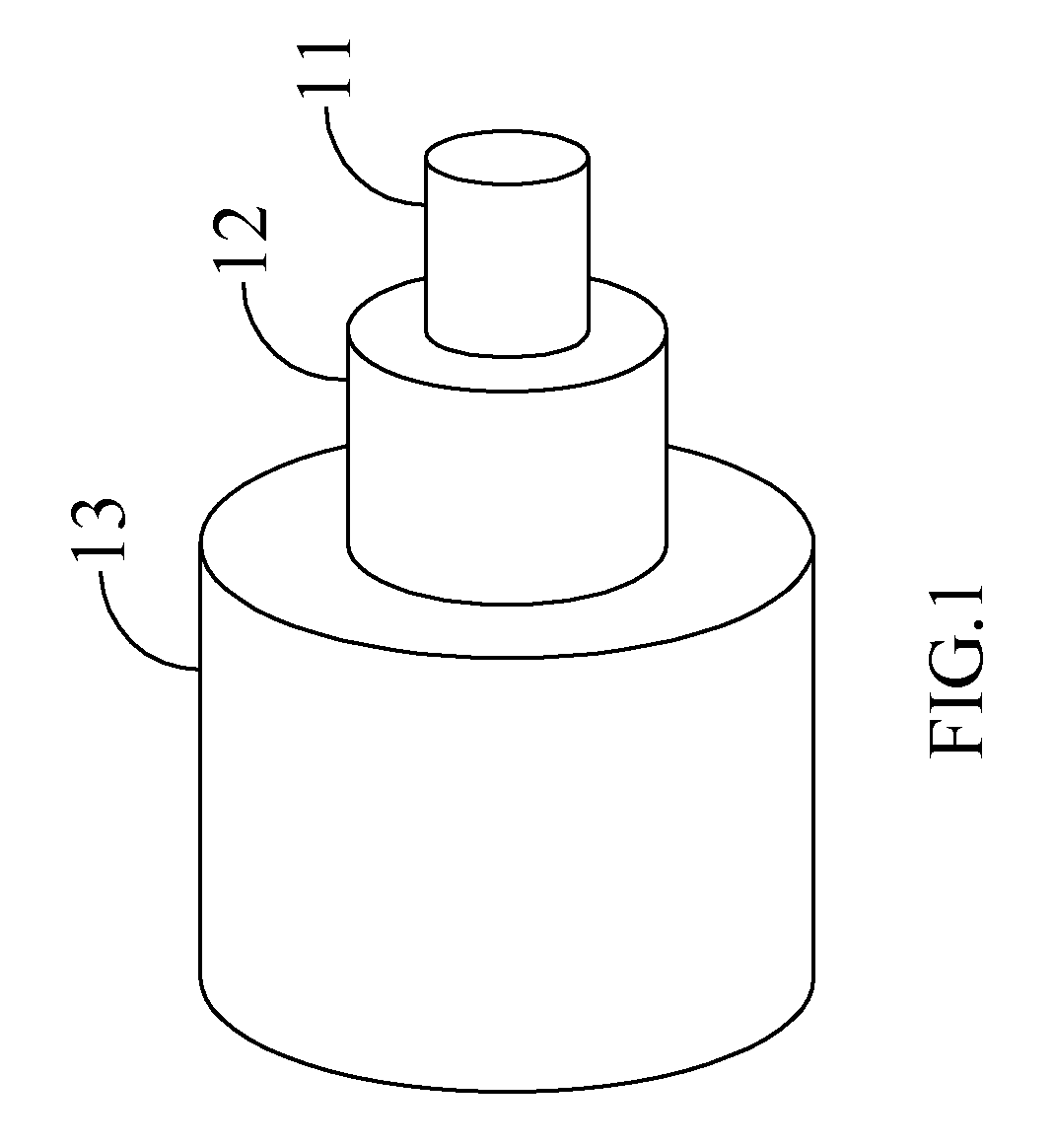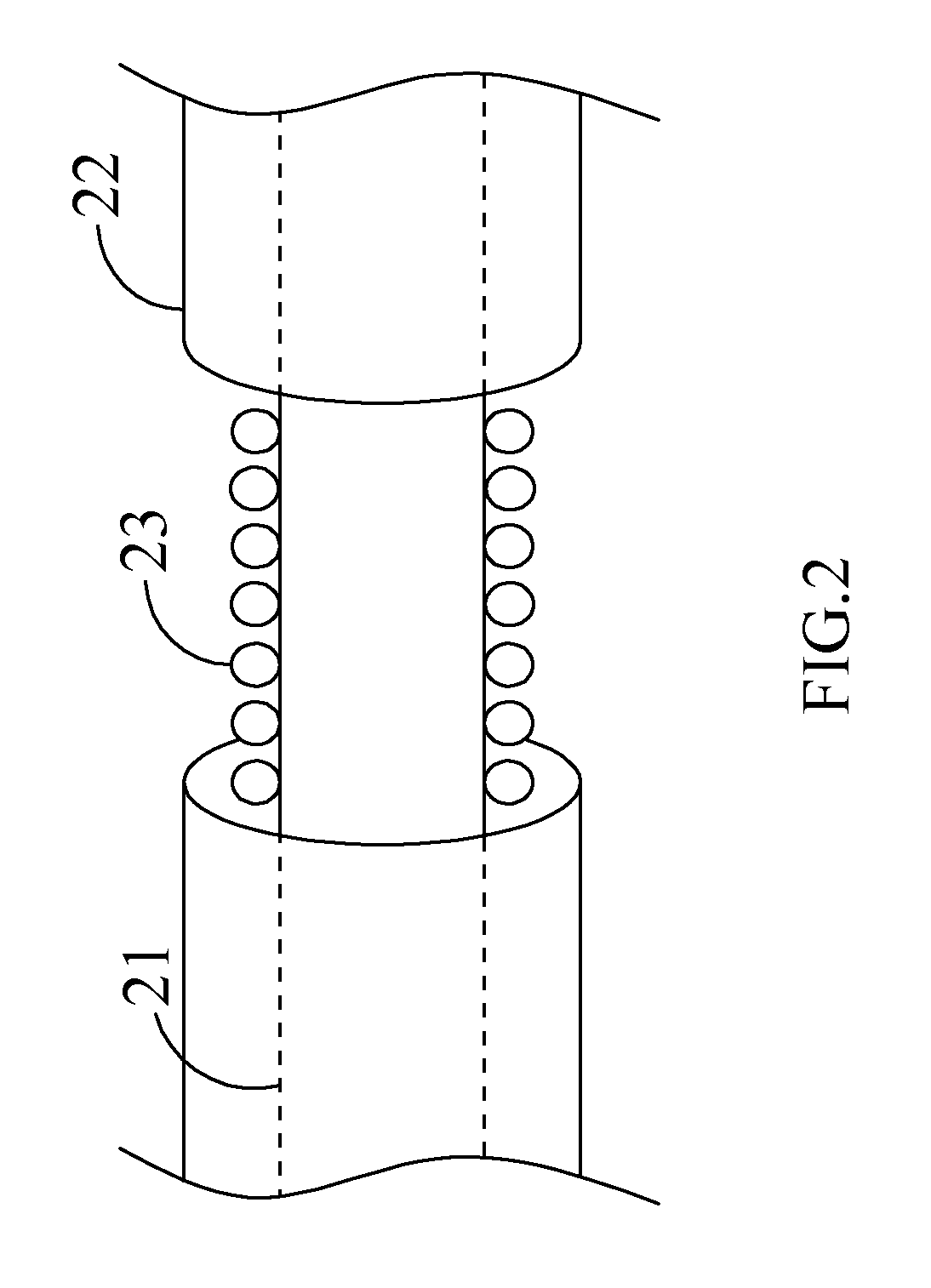Localized surface plasmon resonance sensing system, appartatus, method thereof
a plasmon resonance and sensing system technology, applied in the field of localized surface plasmon resonance (lspr) sensing system, can solve the problems of difficult miniaturization, difficult to meet the needs of small-scale production, and high cost, and achieve the effects of promoting sensitivity, and reducing the size of the lspr sensing system
- Summary
- Abstract
- Description
- Claims
- Application Information
AI Technical Summary
Benefits of technology
Problems solved by technology
Method used
Image
Examples
Embodiment Construction
[0027]Referring to FIG. 1 for a schematic view showing construction of an optical fiber cable, the cable is essentially comprised of three layers, respectively the innermost a core 11, a cladding 12 in the middle, an outermost buffer 13 with materials and functions different from one another. As illustrated in FIG. 2 for a schematic view showing that a plurality of noble metal nano-particles 23 are disposed on the unclad portion of an optical fiber. The plurality of noble metal nano-particles 23 are gold nano-particles or silver nano-particles. The optical fiber comprises a stripped area formed by partially removing the cladding 22 of the optical fiber, then the plurality of noble metal nano-particles 23 are disposed on the core 21 of the optical fiber. The noble metal nano-particles 23 are substantially separated from each adjacent noble metal nano-particles such that the conductivity of the noble metal nano-particle submonolayer is smaller than that of the metal film.
[0028]Please ...
PUM
| Property | Measurement | Unit |
|---|---|---|
| conductivity | aaaaa | aaaaa |
| conductivity | aaaaa | aaaaa |
| diameter | aaaaa | aaaaa |
Abstract
Description
Claims
Application Information
 Login to View More
Login to View More - R&D
- Intellectual Property
- Life Sciences
- Materials
- Tech Scout
- Unparalleled Data Quality
- Higher Quality Content
- 60% Fewer Hallucinations
Browse by: Latest US Patents, China's latest patents, Technical Efficacy Thesaurus, Application Domain, Technology Topic, Popular Technical Reports.
© 2025 PatSnap. All rights reserved.Legal|Privacy policy|Modern Slavery Act Transparency Statement|Sitemap|About US| Contact US: help@patsnap.com



